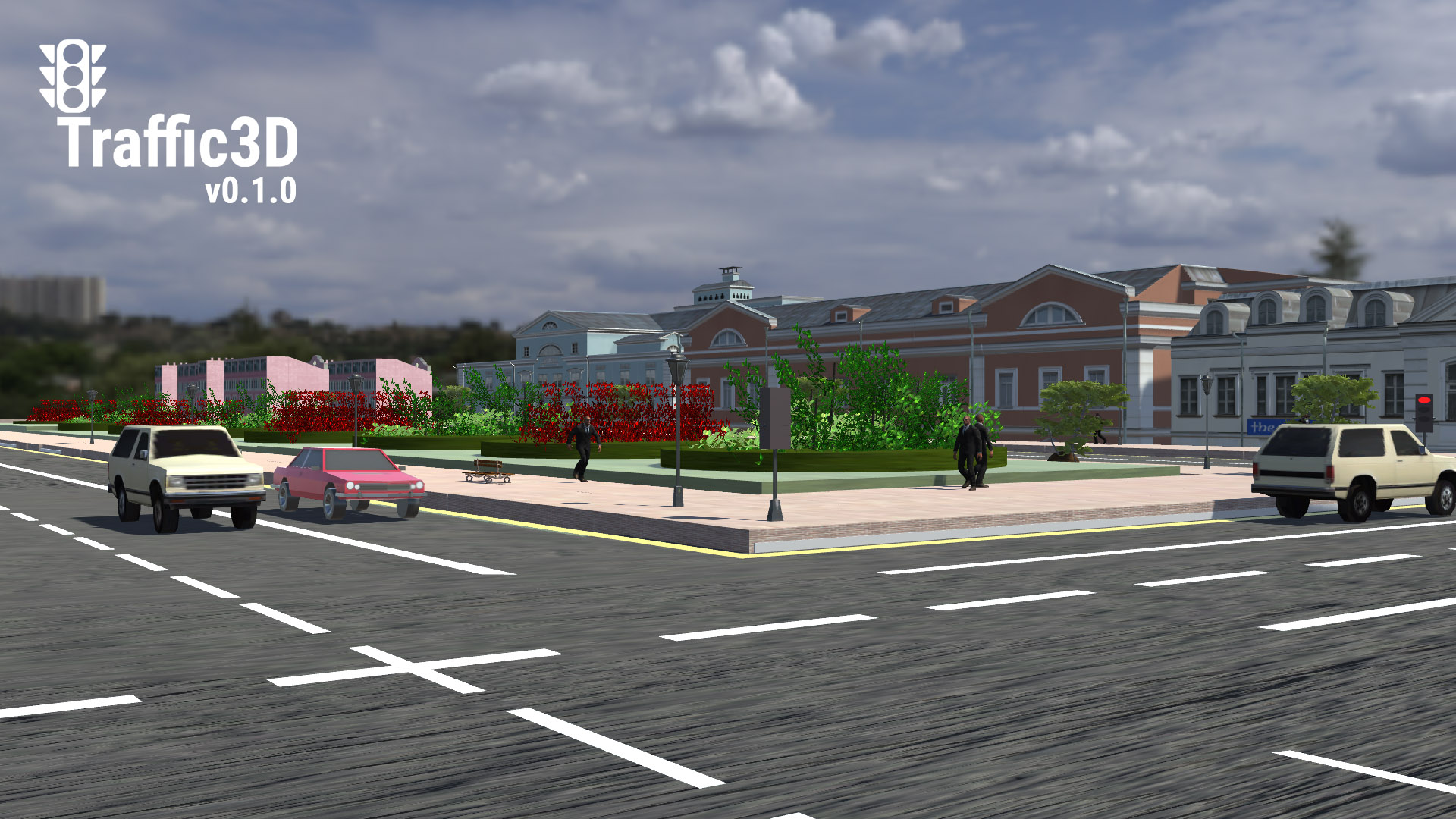Traffic3D: A Rich 3D-Traffic Environment to Train Intelligent Agents¶

Traffic3D is a new traffic simulation paradigm, built to push forward research in human-like learning (for example, based on photo-realistic visual input). It provides a fast, cheap and scalable proxy for real-world traffic environments. This implies effective simulation of diverse and dynamic 3D-road traffic scenarios, closely mimicking real-world traffic characteristics such as faithful simulation of individual vehicle behaviour, their precise physics of movement and photo-realism. Traffic3D can facilitate research across multiple domains, including reinforcement learning, object detection and segmentation, unsupervised representation learning and visual question answering.
New publication at AAMAS 2022¶
This video describes our latest paper, Fully-Autonomous, Vision-based Traffic Signal Control: from Simulation to Reality has recently been presented at AAMAS 2022.
Please see below for a full bibliography.
Evacu-agent¶
Evacu-agent was an undergraduate final year project to extend Traffic3D to provide pedestrians with a framework to model realistic behaviour.
It is now integrated into the Traffic3D repository and can be explored in more detail in Evacu-agent introduction.
Technologies¶
Traffic3D is based on the Unity 3d games engine. The AI is written in Python3 with PyTorch.
Supported platforms¶
Traffic3D is tested on 64-bit Windows, Linux and OSX.
Download Traffic3D¶
Download the latest pre-built version of Traffic3D here:
To download the source code, please visit this page and click on the Download button (to the left of the Clone button).
You can see a list of Traffic3d releases on this page.
Limitations¶
The current release of Traffic3D does not include autonomous vehicles, although users are encouraged to create their own autonomous vehicle scripts.
All vehicles currently move along pre-set paths.
Citing Traffic3D¶
The bibliography below contains a list of papers that describe the research on which Traffic3D is based. However, to cite the software itself, please see the details in the CITATION file in the main repository.
The Software Sustainability Institute has a guide on citing software, which may be helpful to some.
Bibliography¶
Journal publications¶
D. Garg, M. Chli and G. Vogiatzis, 2019, June. Traffic3D: A Rich 3D-Traffic Environment to Train Intelligent Agents. In International Conference on Computational Science (pp. 749-755). Springer.
Articles in blind peer-reviewed conferences¶
D. Garg, M. Chli and G. Vogiatzis, 2022, Fully-Autonomous, Vision-based Traffic Signal Control: from Simulation to Reality, Proceedings of the International Conference of Autonomous Agents and Multiagent Systems - AAMAS 2022.
D. Garg, M. Chli and G. Vogiatzis, 2020, Multi-agent Deep Reinforcement Learning for Traffic Optimisation through Multiple Road Intersections using Live Camera Feed, IEEE Intelligent Transportation Systems Conference - ITSC 2020.
D. Garg, M. Chli and G. Vogiatzis, 2019, A Deep Reinforcement Learning Agent for Traffic Intersection Control Optimisation, IEEE Intelligent Transportation Systems Conference - ITSC 2019.
D. Garg, M. Chli and G. Vogiatzis, 2019, May. Traffic3D: A New Traffic Simulation Paradigm In Proceedings of the 18th International Conference on Autonomous Agents and MultiAgent Systems (pp. 2354-2356). International Foundation for Autonomous Agents and Multiagent Systems.
D. Garg, M. Chli and G. Vogiatzis, 2018, September. Deep Reinforcement Learning for Autonomous Traffic Light Control. In 2018 3rd IEEE International Conference on Intelligent Transportation Engineering (ICITE) (pp. 214-218). IEEE.
D. Garg, M. Chli and G. Vogiatzis, 2018, Deep Reinforcement Learning for Autonomous Traffic Light Control In Proceedings of the 3rd IEEE International Conference on Intelligent Transportation Engineering.